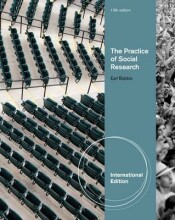Summary: Theories Of Leadership And Management
- This + 400k other summaries
- A unique study and practice tool
- Never study anything twice again
- Get the grades you hope for
- 100% sure, 100% understanding
Read the summary and the most important questions on Theories of Leadership and Management
-
1 Week 1
-
1.1 Lecture 1.1
This is a preview. There are 27 more flashcards available for chapter 1.1
Show more cards here -
What is meant with the black box?
It refers to the unexplained or poorly understood processes that occur between leadership actions and their outcomes. It highlights the gap in understanding the internal mechanisms that explain how and why certain leadership behaviors result in particular effects on followers. -
What is meant with the social identity theory?
It's a person's sense of who they are based on group membership. Groups give us a sense of belonging to the social world. -
What is meant with perceived emotional support?
The degree to which employees believe that their organization values their contribution, cares about their well-being, and fulfills socio-emotional needs. Also contributes to the reciprocity dynamic. -
What are the core assumptions of the social-exchange theory? (3)
1.Social actors engage in activities as a means of obtaining a desired goal.
2. All social activities involve some cost to the actor -- time, energy, other resources.
3. Social actors seek to economize their activities (save money). -
Are the following true:1. Reciprocal social exchange creates trust and social bonds.2. If subordinates collectively agree that their supervisor uses power generously they will legitimate the leader's power. 3. Legitimate power is not necessary for a stable negotiation.4. Unilateral services create power and status differences.5. The unfair use of power does not have to lead to social disapproval.6. If subordinates collectively experience the unfair use of power an opposition movement will develop.
True, true, not true, true, not true, true -
Which six types of social rewards are there?
Personal attraction , socialacceptance , social approval,instrumental services(assisting and support that individuals provide to one another-- helping packing for example), respect/prestige, compliance/power -
Which three types of social costs are there?
Investment intime andeffort todevelop skills that will be used toreward others.
Directcosts in the from of aresource given to another inexchange for something else.Opportunity costs orloss ofrewards which would have beenavailable elsewhere . -
What is the difference between LMX and traditional leadership theories?
Traditional leadership theories positioned leadership as something at the group level. LMX is about the different relationships with different members of the group. The quality of the relationship is the result of behaviors of the leader and follower. -
What is the difference between LMX and POS (perceived organizational support)?
POS focuses on exchange between the organization as a whole and the employees, while LMX focuses on the exchange between the leader and employee. -
What are the predictors of self-efficacy?
- Performanceoutcomes -positive and negativeexperiences in the past
- Verbalpersuasion -encouragement anddiscouragement to anindividuals ' performance.
- Vicarious experience - look at otherpeople's performances and compare yourself to this.
- Physiological feedback -sensations from your body.
- Higher grades + faster learning
- Never study anything twice
- 100% sure, 100% understanding































